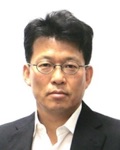Workshop 1
Design of Antennas with Crossed Dipoles

- Name
- Prof. Ikmo Park
- Affiliation
- Ajou University, Korea
Abstract
With the rapid development of today’s wireless communication markets, higher demands have been raised for the antenna design, including compact sizes, high efficiencies, broad bandwidths, multiple bands, specific radiation profiles, ease of fabrication and integration, and low costs. The crossed dipole is a common type of modern antenna with an RF- to the millimeter-wave frequency range. Therefore, crossed dipole antennas have been widely developed for current and future wireless communication systems. They can generate isotropic, omnidirectional, unidirectional, dual-polarized, and circularly polarized (CP) radiation. Moreover, by incorporating a variety of primary radiation elements, they are suitable for single-band, multiband, and wideband operations.
Two techniques, namely insertions a meander line and an arrowhead-shaped end in each dipole arm, are used to realize a compact size of the cross dipole. For CP radiation with single-feed, the dipoles with the reduced length are crossed through a pair of vacant-quarter printed ring. For multi-band applications, each dipole arm is divided into multi-branches with different lengths to obtain multiple resonances. Wideband radiating elements such as bowtie dipoles are employed for wideband applications. To improve the radiation pattern, these radiators are combined with different reflectors, namely metallic cavity and artificial magnetic conductor surfaces.
In this Workshop, the designs, characteristics, and applications of crossed dipole antennas along with recent developments will be presented. Considerations of profile miniaturization, radiation pattern control, bandwidth enhancement, and multiband operation are emphasized.
About the speaker
Ikmo Park received the B.S. degree in Electrical Engineering from the State University of New York at Stony Brook, and M.S. and Ph.D. degrees in Electrical Engineering from the University of Illinois at Urbana-Champaign. He joined the Department of Electrical and Computer Engineering at Ajou University in March 1996. Prior to joining Ajou University, he has been working with the Device & Materials Laboratory of LG Corporate Institute of Technology, Seoul, Korea, where he had been engaged in research and development of various antennas for personal communication systems, wireless local area networks, and direct broadcasting systems. He was a Visiting Professor at the Department of Electrical and Computer Engineering, POSTECH, Pohang, Korea, from March 2004 to February 2005, and the Department of Electrical and Computer Engineering, University of Arizona, Tucson, Arizona, USA, from July 2011 to June 2012.
He has authored and co-authored over 300 technical journal and conference papers. He also holds over 30 patents. He served as a Chair of the Department of Electrical and Computer Engineering at Ajou University. He is a member of Board of Directors at the Korea Institute of Electromagnetic Engineering and Science (KIEES). He serves as chairs, organizers, and members of the program committees for various conferences, workshops, and short courses in electromagnetic related topics. His current research interests include the design and analysis of microwave, millimeter-wave, terahertz wave, and nano-structured antennas. He is also a member of Eta Kappa Nu and Tau Betta Pi.





















